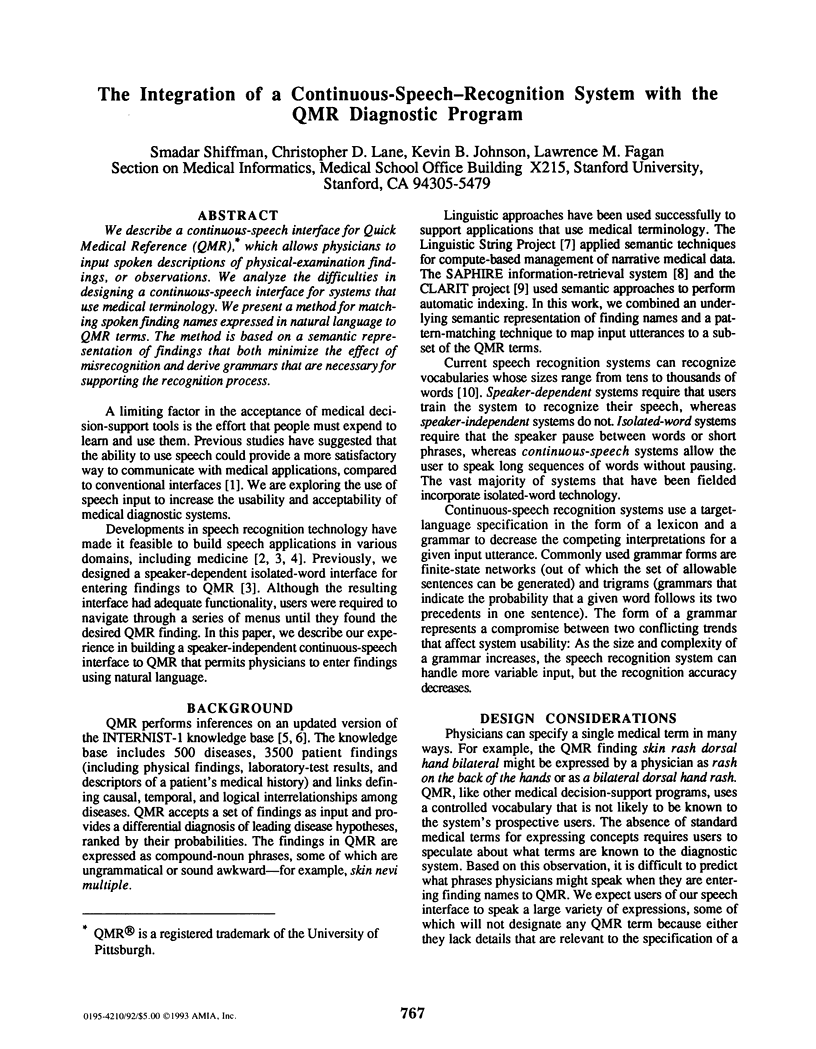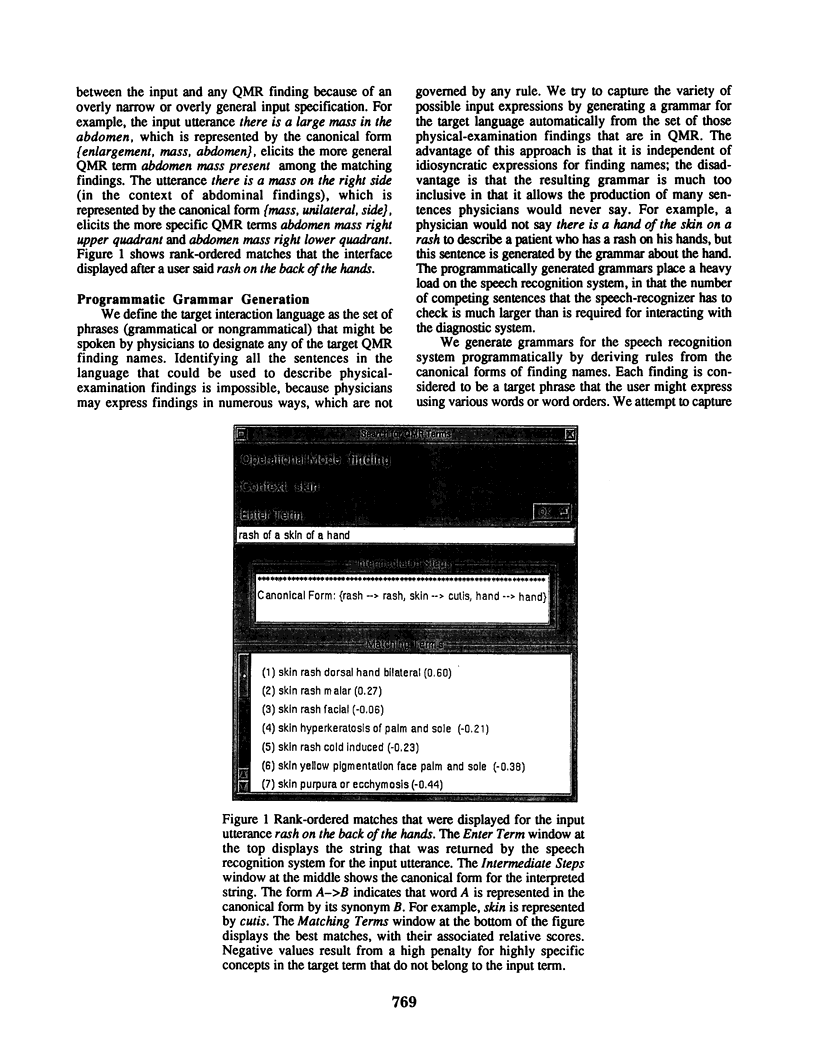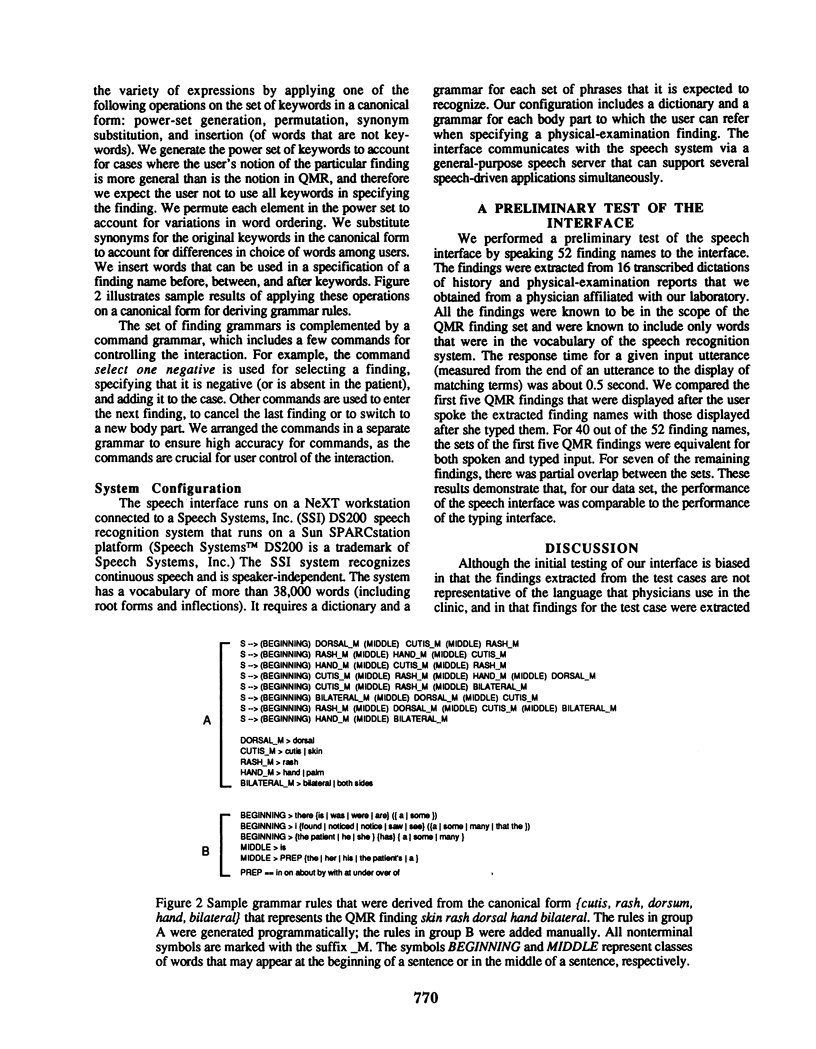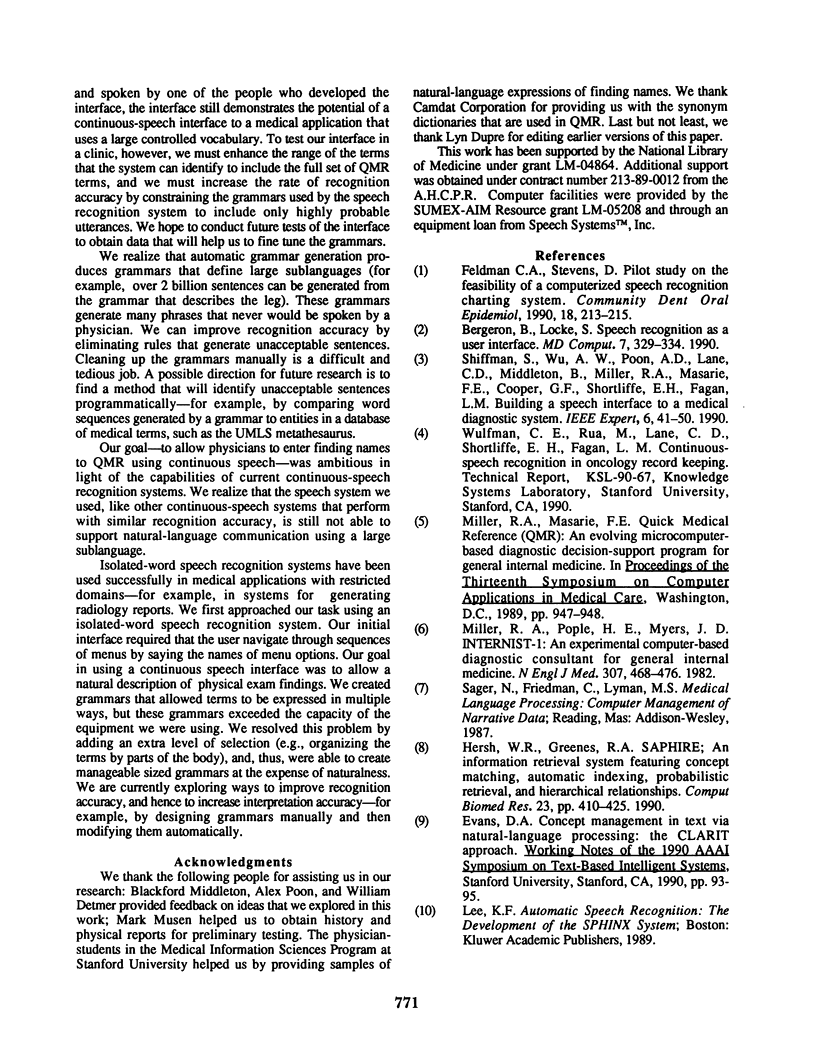Abstract
We describe a continuous-speech interface for Quick Medical Reference (QMR), which allows physicians to input spoken descriptions of physical-examination findings, or observations. We analyze the difficulties in designing a continuous-speech interface for systems that use medical terminology. We present a method for matching spoken findings names expressed in natural language to QMR terms. The method is based on a semantic representation of findings that both minimize the effect of misrecognition and derive grammars that are necessary for supporting the recognition process.
Full text
PDF




Selected References
These references are in PubMed. This may not be the complete list of references from this article.
- Bergeron B., Locke S. Speech recognition as a user interface. MD Comput. 1990 Sep-Oct;7(5):329–334. [PubMed] [Google Scholar]
- Feldman C. A., Stevens D. Pilot study on the feasibility of a computerized speech recognition charting system. Community Dent Oral Epidemiol. 1990 Aug;18(4):213–215. doi: 10.1111/j.1600-0528.1990.tb00060.x. [DOI] [PubMed] [Google Scholar]
- Hersh W. R., Greenes R. A. SAPHIRE--an information retrieval system featuring concept matching, automatic indexing, probabilistic retrieval, and hierarchical relationships. Comput Biomed Res. 1990 Oct;23(5):410–425. doi: 10.1016/0010-4809(90)90031-7. [DOI] [PubMed] [Google Scholar]
- Miller R. A., Pople H. E., Jr, Myers J. D. Internist-1, an experimental computer-based diagnostic consultant for general internal medicine. N Engl J Med. 1982 Aug 19;307(8):468–476. doi: 10.1056/NEJM198208193070803. [DOI] [PubMed] [Google Scholar]


